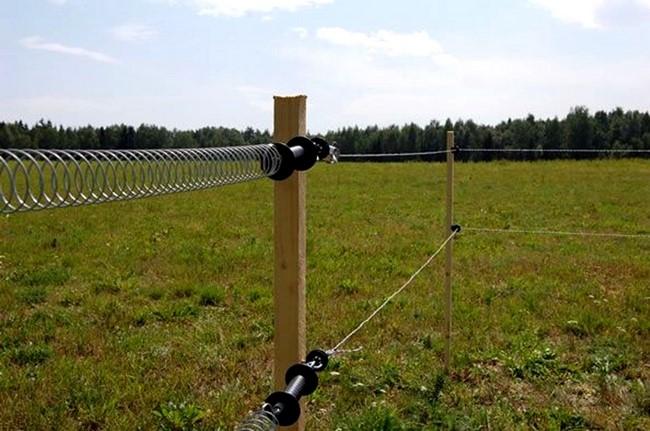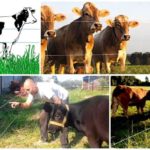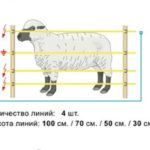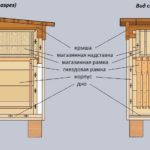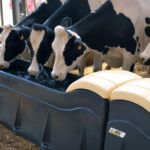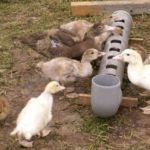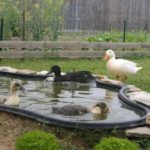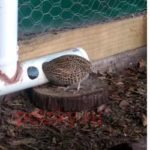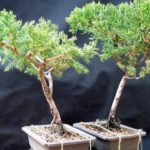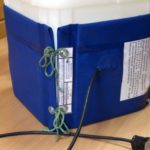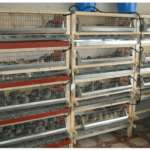An electric shepherd for cows is the simplest device that you can make with your own hands. The product is easy to assemble and disassemble. If necessary, it is moved to another place. This allows the pasture to be used more rationally. The main components of an electric fence include conductors, insulators, metal wire or mesh, a pulse generator, and elements for making a wicket.
What is an electric shepherd
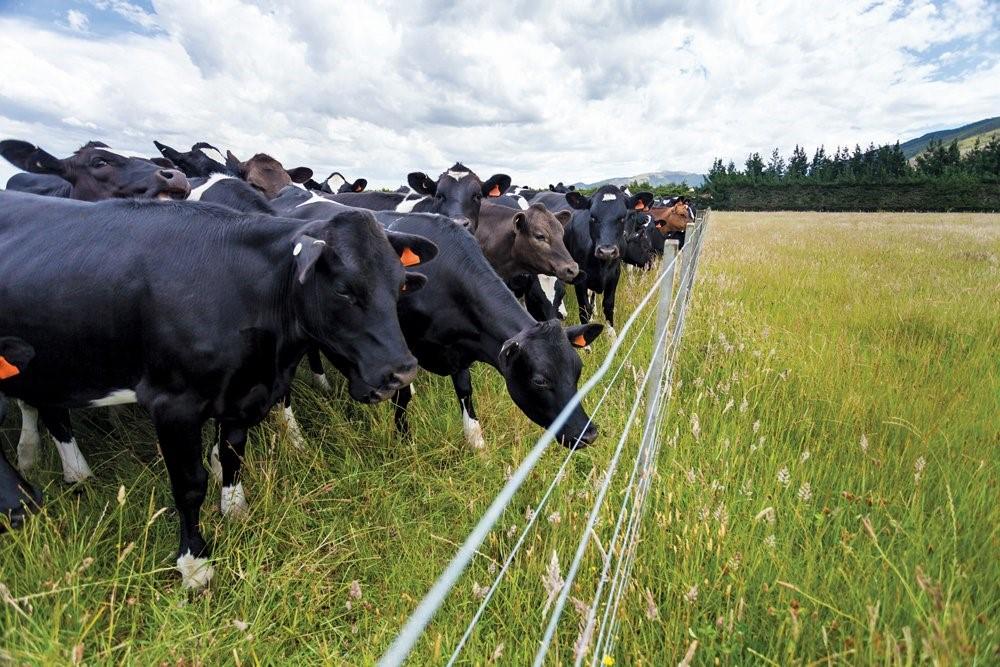
An electric fence, or electronic shepherd, is a device based on a generator that transmits current through special wires. The voltage, which is safe for animals, repels cattle from the fence, thereby limiting their movements outside the pasture. In addition, wild animals will not attack the herd of cows that graze on the site.
With the help of an electric shepherd, not only pasture areas are fenced, but also temporary places for exercise of animals, as well as cattle runs. The installation makes it easier to monitor the herd during grazing. Touching the fence is not dangerous for the animals, but they avoid it because it is extremely unpleasant. Therefore, cows try not to come close to the fence.
What is it for?
The electric shepherd is a useful assistant for the farmer. It is necessary in the following cases:
- protection of livestock from visits from wild animals;
- restricting the movement of cattle without human supervision;
- grazing cattle without a leash.
The device is effective for small livestock and poultry. It will also be useful for protecting areas with crops and as a fencing of dangerous landscape areas.
Advantages and disadvantages
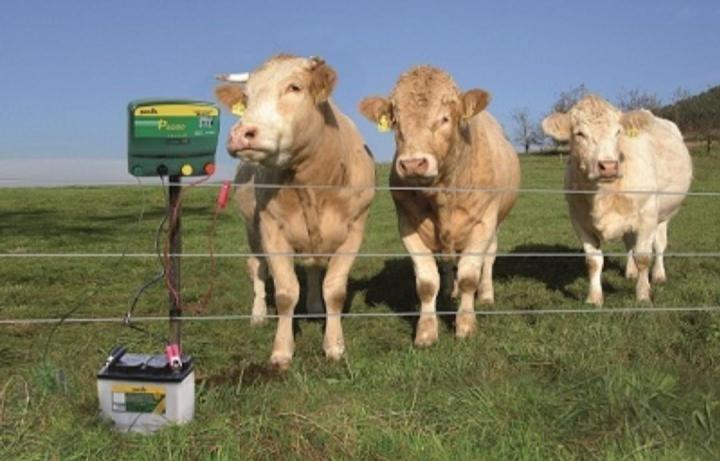
The electronic shepherd is an economical device. The costs of its purchase and installation correspond to a shepherd’s salary for one month of work in the pasture. If you make the fence yourself, it will cost even less.
Many farm owners speak positively about this product, but the electric shepherd has some disadvantages. Some animals with too thick fur are often not sensitive to electric shocks. Therefore, theoretically, they can get out of the fence. In addition, if the site is located far from a populated area, then problems with power supply are inevitable.
As a rule, equipment repair is a labor-intensive process. You need to be prepared for this in advance. Owners of such a device recommend periodically mowing the green mass outside the grazing area so that the grass does not attract animals.
Also, during self-assembly, minimal electrical knowledge will be required. Other possible disadvantages of the product include rapid battery wear and high power consumption.
How to make it yourself
Farm owners often make electronic fencing themselves, skillfully using available tools. The design is extremely simple. However, during manufacturing it is important to observe safety precautions.
Device diagram
To properly organize a pasture, an electric shepherd is needed. The movement of animals requires constant monitoring. In some cases, one employee is not enough for this.
The fence is a fence generator (single-wire or multi-wire). The simplest device consists of poles that are installed around the perimeter. They are covered with wire, tape or metal mesh (for small birds - ducks, geese and chickens).Current is supplied from the generator once per second. Having felt the electrical impulse on itself, the animal avoids repeated contact with the wire.
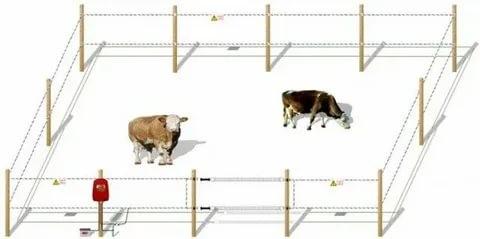
To make a generator you need a transistor. It transmits impulses to the fence. Their source will be the ignition coil. It generates voltage and converts them into impulses. The assembly of the structure is completed by connecting to the generator.
Necessary materials
When metal or wood supports are chosen as the material for making your own electric fence, you will need insulators. One of the most budget-friendly options that is always on hand is cut-off plastic bottles. They are secured with self-tapping screws, and wires are threaded through the holes. Bicycle tubes, plastic covers, and electrical tape are also suitable for these purposes.
For high-quality grounding, iron rods or special fittings are selected. The length of the grounding elements should not be less than 120-130 cm. In order for them to fully perform this function, they need to be dug into the ground a meter deep. The design loses its meaning if the grounding is performed poorly. You will also need wire with an anti-corrosion coating. Most often, galvanized wire with a diameter of 2.5 mm is used.
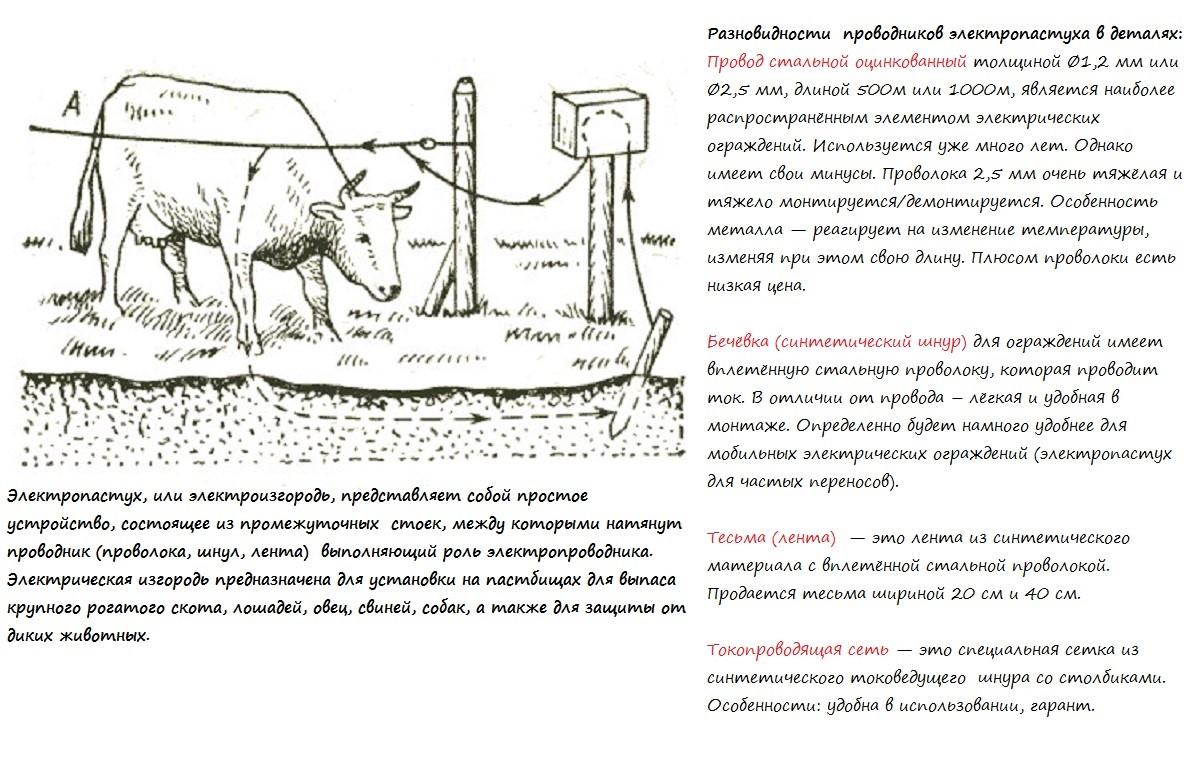
Many people choose fiberglass rods as fencing supports, which are the most economical, reliable and safe. These posts are made of innovative composite materials, which allows them to serve for a long period of time.
Conditions for making an effective fence
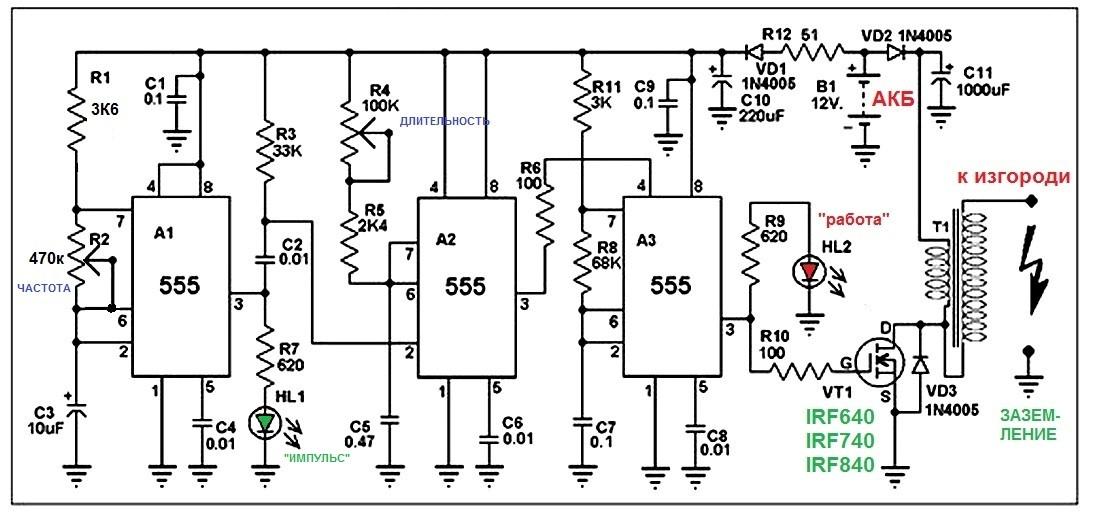
For proper operation of the electric shepherd, a number of conditions must be met:
- the fence is necessary to scare away livestock, and not to cause damage and injury;
- the wire should be tensioned - it should not touch the ground;
- the pulse source must be grounded;
- pillars that serve as supports must withstand high voltage.
A product made independently must be practical and mobile. Power is obtained from the network, solar battery or other autonomous source.
Number and height of lines
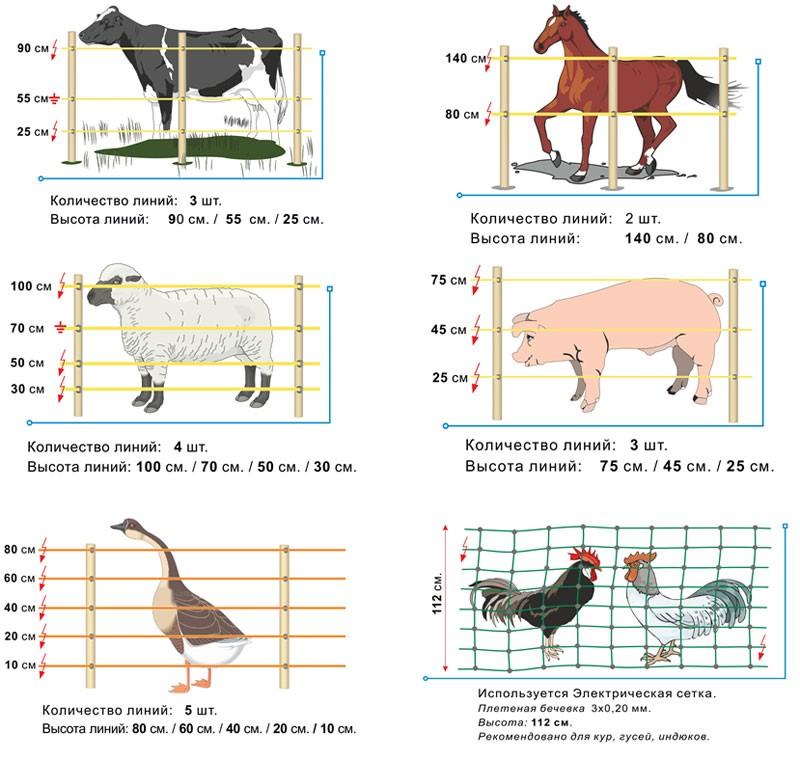
The height, as well as the number of reference lines, is chosen individually, based on the type of animal and its activity. If we talk about cattle, then the optimal height is 1 m. An electric shepherd for cows consists of three lines of wire (minimum two). They are located in relation to the ground line at 25, 55 and 95 cm.
DIY installation
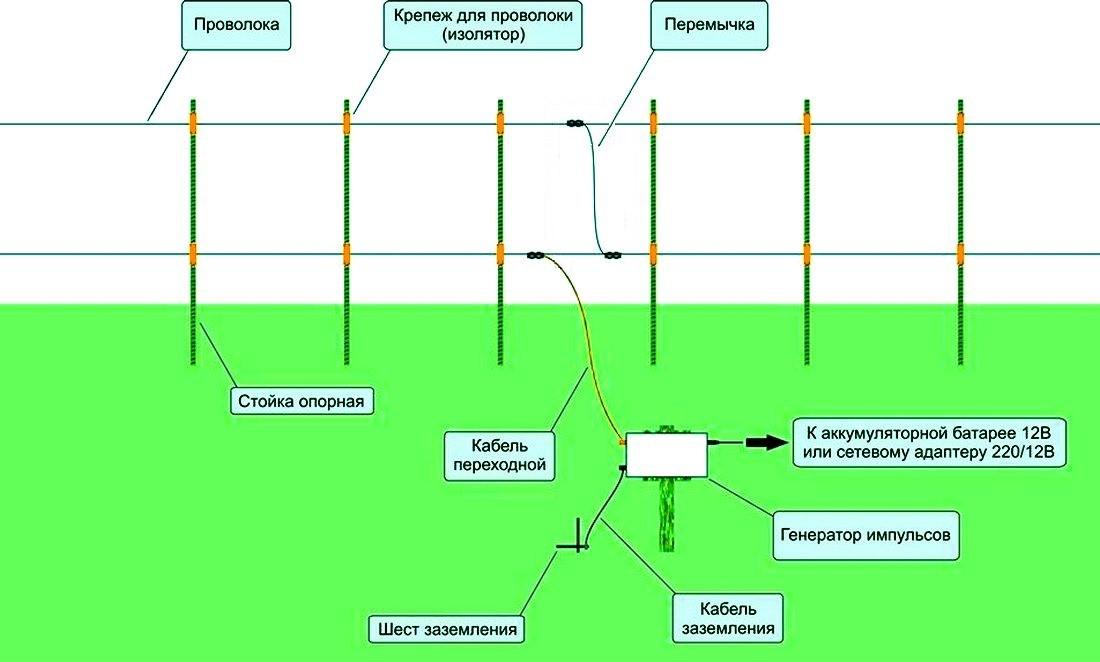
Before installing the structure, the area is studied. You cannot install an electric fence near high-voltage stations. It is also necessary to determine the area of pasture in advance. Support posts should be placed at a distance of 10 m from each other. The perimeter of the site is divided into this interval. On each of the resulting poles, insulators are made, to which wires are attached.
It is important to tie colored ribbons onto the electric shepherd's wire so that it can be seen from afar. Warning signs must be placed nearby. After installation, the structure is divided into sections and equipped with gates.

